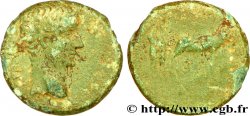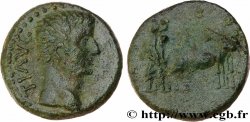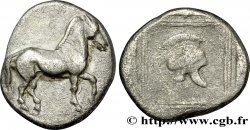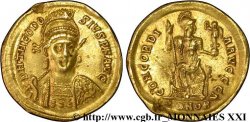v36_0363 - TIBERIO Denier
MONNAIES 36 (2008)
Prezzo di inizio : 550.00 €
Valutazione : 850.00 €
Prezzo realizzato : 550.00 €
Numero di offerte : 1
Offerta maxima : 710.00 €
Prezzo di inizio : 550.00 €
Valutazione : 850.00 €
Prezzo realizzato : 550.00 €
Numero di offerte : 1
Offerta maxima : 710.00 €
Tipo : Denier
Data: c. 14-16
Nome della officina / città: Gaule, Lyon
Metallo : argento
Titolo in millesimi : 900 ‰
Diametro : 19 mm
Asse di coniazione : 12 h.
Peso : 3,72 g.
Grado di rarità : R1
Emission: 1er
Commenti sullo stato di conservazione:
Exemplaire sur un petit flan, parfaitement centré des deux côtés avec les grènetis complets. Très beau portrait. Revers de style fin. Très jolie patine de médaillier avec des reflets mordorés
N° nelle opere di riferimento :
C.16 (2 fr.) - RIC.26 - BMC/RE.34 - RSC.16 a - RCV.1763 (280$) - MRK.5 /4 (700€) - BN/R.16 - Giard/L1.144
Diritto
Titolatura diritto : TI CAESAR DIVI - AVG F AVGVSTVS.
Descrittivo diritto : Tête laurée de Tibère à droite (O*).
Traduzione diritto : “Tiberius Cæsar Divi Augusti Filius Augustus”, (Tibère César fils du divin Auguste, auguste).
Rovescio
Titolatura rovescio : PONTIF - MAXIM.
Descrittivo rovescio : Pax (la Paix) ou Livie assise à droite sur un siège, tenant une branche d'olivier de la main gauche et de la droite un long sceptre ; double ligne d’exergue.
Traduzione rovescio : “Pontifex Maximus”, (Grand pontife).
Commento
Rubans de type 3. Trace de cassure de coin devnt la bouche de Tibère. Comme pour le denier d'Auguste, cette pièce appartient à l'atelier impérial de Lyon et ce type de denier a circulé pendant pratiquement un siècle. Il se rencontre très souvent avec des monnaies gauloises de la phase terminale dans les fouilles archéologiques. C’est la monnaie romaine la plus courante en Gaule pour les Julio-Claudiens. La première émission se caractérise par un socle représenté par double ligne d’exergue et les pieds du siège sont lisses ; les pieds de Livie reposent directement sur le sol ; au droit, les rubans de la couronne de type 3 retombent en petites ondulations, le portrait est réaliste.
Type 3 ribbons. Trace of die breakage in front of Tiberius's mouth. As with the Augustan denarius, this coin belongs to the imperial mint of Lyon and this type of denarius circulated for almost a century. It is very often found with Gallic coins from the final phase in archaeological excavations. It is the most common Roman coin in Gaul for the Julio-Claudians. The first issue is characterized by a base represented by a double exergue line and the legs of the chair are smooth; Livia's feet rest directly on the ground; on the obverse, the ribbons of the type 3 crown fall in small undulations, the portrait is realistic
Type 3 ribbons. Trace of die breakage in front of Tiberius's mouth. As with the Augustan denarius, this coin belongs to the imperial mint of Lyon and this type of denarius circulated for almost a century. It is very often found with Gallic coins from the final phase in archaeological excavations. It is the most common Roman coin in Gaul for the Julio-Claudians. The first issue is characterized by a base represented by a double exergue line and the legs of the chair are smooth; Livia's feet rest directly on the ground; on the obverse, the ribbons of the type 3 crown fall in small undulations, the portrait is realistic







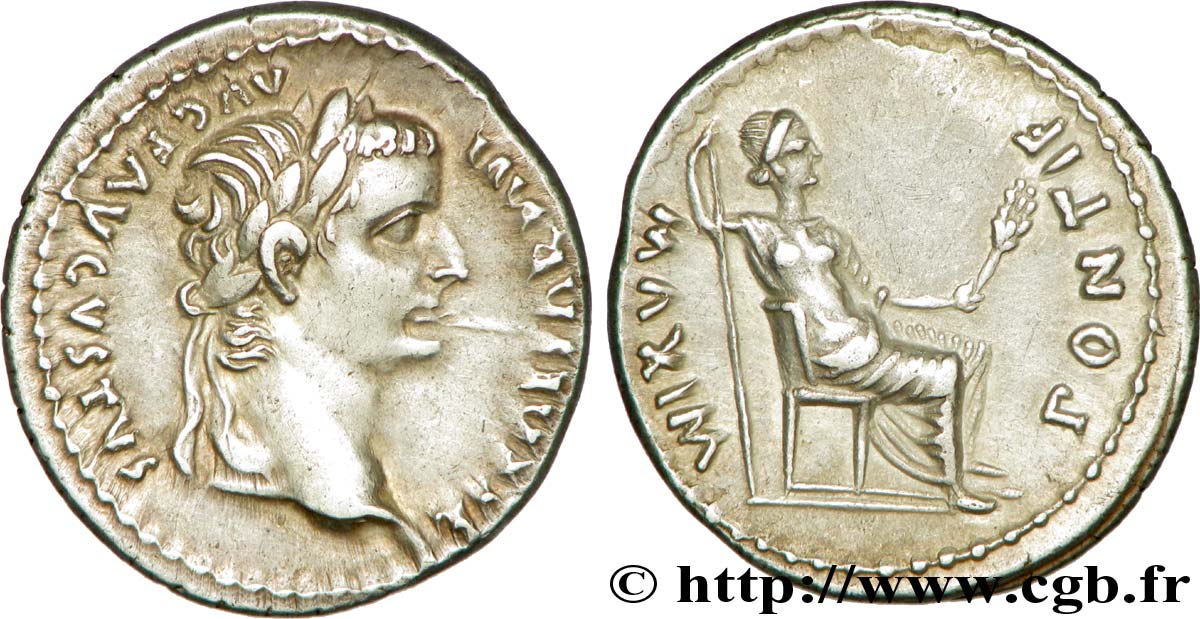
 Segnalare un errore
Segnalare un errore Stampate la pagina
Stampate la pagina Condividi mia selezione
Condividi mia selezione Fai una domanda
Fai una domanda Consegnare / vendere
Consegnare / vendere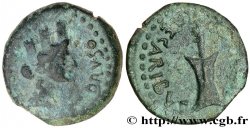
 Descrittivo
Descrittivo